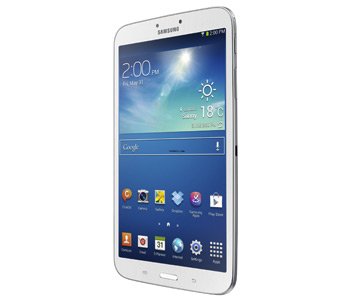Update Galaxy Tab 3 8.0 SM-T311 Android 4.2.2 UBUAMH1 Official Firmware
Galaxy Tab 3 8.0 SM-T311 is the tablet which will be equipped with Android 4.2.2 UBUAMH1 after you are done with this update guide.
The Galaxy Tab 3 8.0 311 is a July 2013 release. The new Jelly Bean 4.2.2 stock firmware was launched in October this year for Argentina and in November for these countries: Panama, Uruguay and Colombia.
From the get go you should know that the KIES logo of the variant released for Argentina isn’t activated, while the one for the other two countries is. In a nutshell: users of the tablet who live in Argentina will be able to upgrade the tablet via Samsung’s KIES software; in case you don’t wish to use that software or our tutorial, you can try via OTA by making use of the Software Update option under Settings menu.
The Android 4.2.2 UBUAMH1 official firmware has many new features. Here it is: bug fixes, new sounds for wireless charging and low battery, new download notifications, new Gallery app which delivers faster speeds when loading, long-pressing the WiFi and Bluetooth icons in Quick Settings will toggle the on/off state, USB debug white-list and fixed Bluetooth audio streaming bugs.
The tablet in your hands must be the Galaxy Tab 3 8.0 SM-T311 if you want to experience a smooth and successful upgrade; if today’s new firmware is installed on the wrong device, you will brick it.
The gadget must also come with a custom ROM. But, if it’s rooted, you will lose its root access after the update is performed; and the tablet’s system partition will be deleted. However, you will get to keep the important data as well as these: the internal and external SD cards.
Requirements
We’re now delivering some very important requirements:
- enable USB Debugging on the tablet;
- flash USB drivers fit for the tablet from here on your laptop;
- turn off, on both your notebook and your tablet, every single one of the security programs that comes with them;
- charge your tablet’s battery if its charge levels are low;
- follow our tutorial only if the notebook or comp you use is running Windows.
- always remember to make two backups (one of them a standard one and the other a NANDroid one, too, via this procedure.
Instructions
- The steps that bring the new OS on your Samsung SM-T311 are here to be followed. Start with the first of them which requires the following from you: download the Android 4.2.2 UBUAMH1 (the Argentina version from , the Colombia version , the Uruguay version from and the Panama version from ) and Odin from this page on your laptop (or comp).
- When the download is over, save them on the notebook and unzip the two packages before you can enter the tablet in Download Mode by pressing and holding, at the same time, Volume Down and Power; the logo of Android will then pop up, so you need to do this: press Volume Up and your tablet will land in the Download Mode so that you can then open the Odin on the notebook as an Admin.
- Then comes the part where your tablet has to be connected to your laptop via the USB cable of the former; when you are shown a yellow ID:COM box and a message that reads “Added!!“, you should go on to the next step. But if you don’t see them, you have to flash the USB drivers again or use a different USB port.
- After you establish a connection between the tablet and the notebook, you need to tap PDA. Then continue with these guidelines: choose a file with a CODE in the name, tap Phone, opt for a file with MODEM in the name, click on CSC, choose a file which has CSC in its name, tap PIT and select a file that comes with a .pit extension.
- When done, you should check these boxes: Re-partition, F. Reset Time and Auto Reboot. You will then see, on the display an option labelled “Start“, so tap it to begin the installation of the new firmware on your tablet.
- [sc name=”banner-jos”]Once the new firmware is on your Galaxy Tab 3 8.0 SM-T311, the latter will soon reboot, display a “Pass” message and then you will be able to disconnect, at last, the tablet from your notebook. Then you will be able to have a go at the new firmware in peace.
Which firmware you can enjoy or dislike. If the latter happens, you have to use the NANDroid backup; its role is to restore the old ROM on your tablet by cancelling the update process.
We have a comment field below in case you have questions.





